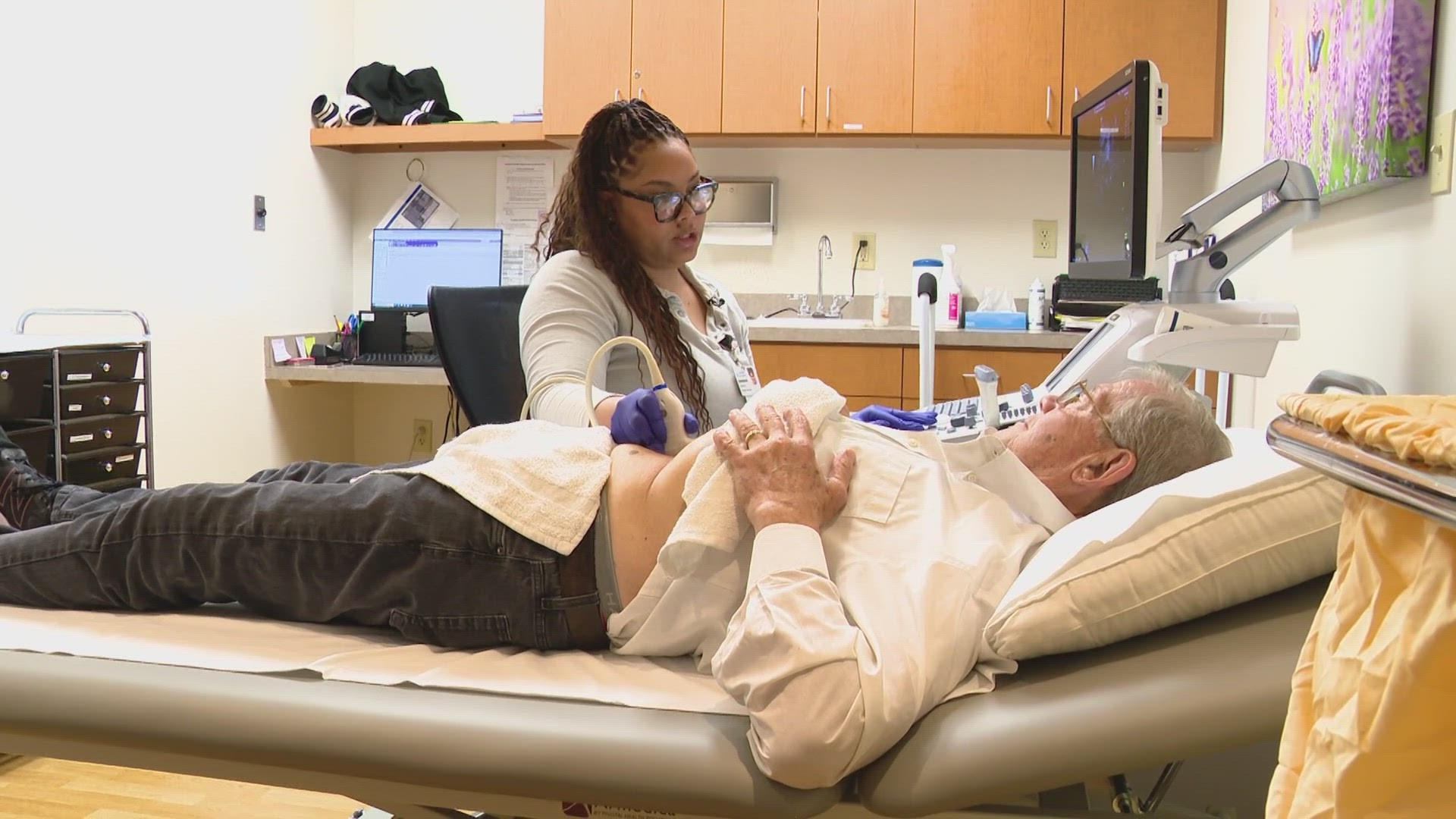INDIANAPOLIS — Slowing down is not in the plans for Bruce Hodgson.
At 82, he is active, cutting trees and traveling overseas.
Recently, when moving a 300-pound warthog in his trailer, his xiphoid stuck out through his sternum from the strain. Ultimately, screenings led to the discovery of an aortic aneurysm.
His doctor referred him to Dr. Brent Marsden, a vascular surgeon, who performed a minimally invasive fix, with two incisions and multiple stents.
"It would have continued to enlarge at some point in time, it likely would have...developed a problem to where it would have ruptured and killed him," Marsden said. "It's a good fix and a good repair in the right situation. Fortunately for Bruce, he was a good candidate for that. He went home within 24 hours and was back to full normal activity within six to seven days after surgery. It's a major operation but with a very good successful recovery."
Now, Hodgson is back to health and working on documenting his career in a book through a partnership with Purdue University.


"I'm an astronautical and aeronautical engineer from Purdue and 68. I got to go to Boeing aerospace. I got to work on the Apollo 7 post-flight, the Apollo 8 pre-flight," Hodgson said. "In April of 1970, I was working on the nuclear warhead of the air launch cruise missiles. In October of 1970, I was being held by the KGB in Moscow. So I've had pretty good range of experiences. It's been amazing."
And with an engineering mindset, the power of a routine screening and simple stent is not lost on Hodgson.
"It's amazing to see those things as an engineer, you know it's a spring with GoreTex on it, and what wonders it can do to give you good circulation, it's really been wonderful," Hodgson said.
Aortic aneurysms, blockages in your carotid artery, and poor circulation in your legs can all be discovered through a trivascular screening.
"For the aneurysms, in particular, it looks at the size of that aorta," Marsden said. "We want to make sure that there's no ballooning, and then the carotid arteries, it does specifically look at flow where there's narrowing of plaque, that if it gets too narrow, and your risk of stroke goes up to the point to where surgical intervention, whether it's with surgery, a small cut on the neck or with a stent, can be beneficial to reduce your risk."
"For the legs, it's really a blood pressure cuff test," Marsden said. "We put blood pressure cuffs on your legs to compare it to the blood pressure in your arms. That helps us determine what the flow is down to the legs. One of the most important things is that vascular disease is often times silent, insidious, we don't know that it's there, until we look."
To learn more about trivascular screening through Check Up 13, click here.

